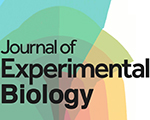The world is a complicated place. In order to survive, an animal must detect and extract useful information from the environment to guide its behavior. Few animals do it better than the humble ant. With more than 12,000 known species, they provide an astounding repertoire of behavioral specializations. They are most famous for their complex social structure, but ants are equally remarkable as navigators. Their tiny brains (about a quarter of a million neurons) can detect polarization of light, sound, magnetic fields, and a wide range of chemicals. For most ant species, odor information dominates the brain and is used not only to find food, but also to navigate and to communicate. In contrast to fruit flies (a common invertebrate model system in neuroscience), ants have a large number of odor receptor genes (about 400 whereas flies have about 60). Thus, ants represent an interesting and untapped model for understanding the neural basis of sensation and sensory-motor transformations.
In this study, we took the first step to understand how ants’ brains sense the odor world by looking at their antennae. These long, flexible, highly active and highly mobile sensory appendages are studded with odor receptors. We used high resolution cameras to see – for the first time – the antennae dynamics while ants tracked odor trials. This provided a unique look at how the ant engages with the odor world. We discovered that ants have several distinct, stereotyped behaviors during tracking, each of which employs a different pattern of antennae usage. These differences impact the timing and amount of odor information received by the brain. We also found that the left and right antenna are coordinated and used differently during tracking, such that ants leverage their bilateral symmetry to sample a wider odor space and to serve different navigation goals. Furthermore, the patterns we found in antennae movements suggest that ants do compare information from both antennae to track trail edges and guide the magnitude and direction of turning angles. These descriptions provide insight into the general strategies ants use for trail tracking as well as evidence for how the two, distinct antennae move with respect to each other and relate to motor output. In future studies, we hope to couple behavioral analysis to neural recordings to determine how odor inputs and antennae position information are transformed into motor outputs in simple, as well as more complex, odor trails.
‘Trail overlap’ during tracking.
A tracking trial was cropped and aligned. Blue (left) and red (right) circles display the approximate area used for ‘trail overlap’ measurement. Bar plots show the “trail overlap” values per frame, and a line plot of these values over time is shown above.
This project was led by a very talented and dedicated Neurobiology undergraduate, Matt McGill (co-first author, class of ’17). Matt was recruited to the lab as a freshman, and he developed the project over three years as part of his research thesis. He is currently working on his PhD in the Program for Neuroscience at Harvard Medical School (Polley lab).
by Ryan Draft



